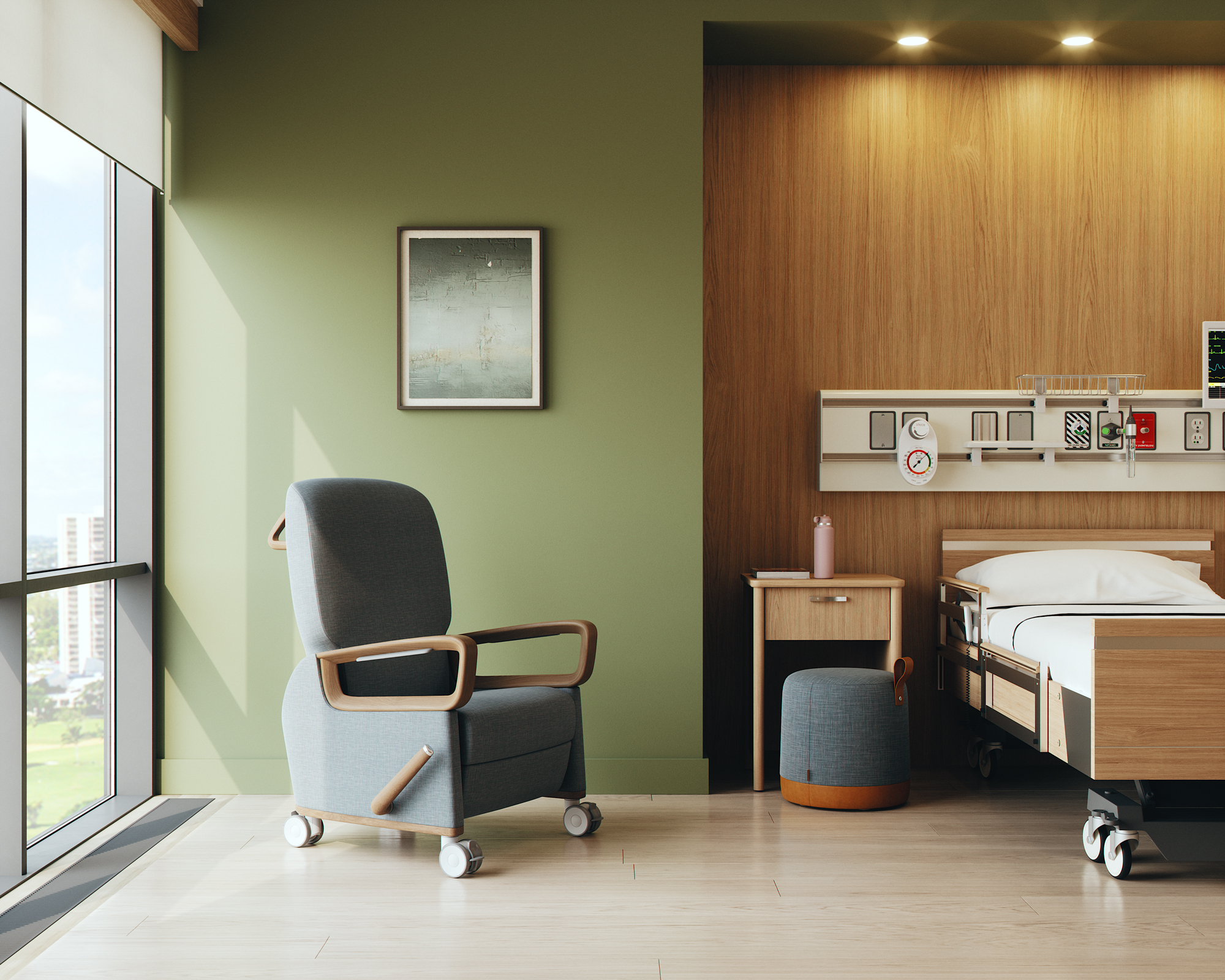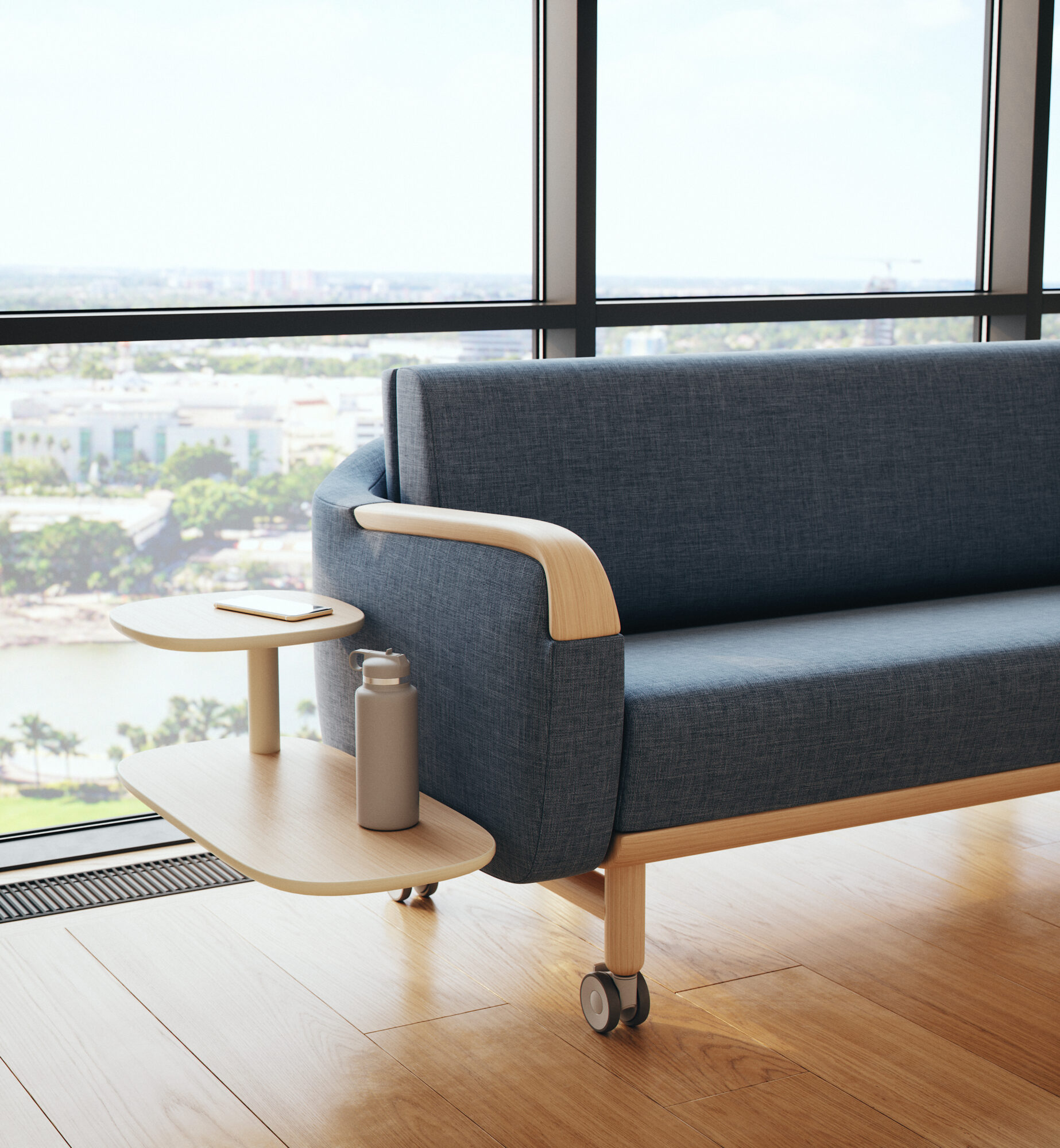Hospitality Inspired Patient Rooms

A warm, comforting patient environment isn’t just aesthetic—it shapes outcomes, reduces stress, and helps patients heal.
July 2025
Hospitals across the country are transforming spaces with hospitality-inspired patient rooms, shifting away from sterile, clinical settings to warm, welcoming environments that support healing. Hospitality-inspired patient rooms blend comfort, thoughtful design, and emotional well-being to reduce patient stress, improve outcomes, and enhance satisfaction for patients and staff alike.
Why Hospitality Design Matters in Healthcare
The hospitality industry excels at comfort and personalization. Now, healthcare is adopting these same principles. By creating calming spaces, hospitals can reduce patient stress and encourage faster recovery. In fact, neuroaesthetics research shows that design directly affects emotional well-being and the brain.
Key Elements of Hospitality-Inspired Patient Rooms
Warm and Calm Environments
Instead of harsh lighting and cold colors, hospitals are adding warm lights, soft colors, and comfortable furniture. These changes help patients relax and feel safer.
Nature-Inspired Design
Bringing nature indoors helps reduce stress and supports healing. Elements like plants, views of greenery, and nature-themed art can lower blood pressure and anxiety. Learn more about biophilic design in healthcare.
Patient Control and Choice
Smart technology in patient rooms gives people control over their lighting, temperature, and entertainment. This sense of control helps patients feel more comfortable during their stay.
Amenities That Add Comfort
Small touches matter. Features like plush seating, high-quality linens, and space for family members make hospital stays less stressful and more comfortable.
Benefits Beyond Aesthetics
Hospitals see clear benefits when they invest in hospitality-inspired design:
- Better Patient Outcomes: A calm environment reduces stress and speeds up healing.
- Higher Satisfaction Scores: Comfortable spaces improve the patient experience, which impacts hospital performance.
- More Family Involvement: Welcoming rooms encourage family members to stay, supporting the patient’s care.
- Staff Retention: Pleasant and efficient environments reduce burnout and help retain healthcare staff.
Challenges to Consider
While these benefits are clear, designing patient rooms this way requires balance. Hospitals must consider infection control, durability, and costs while adding comfort. Designers, healthcare teams, and facility managers need to work together to find the best solutions.
Beyond basic medical care, patient rooms can be equipped with amenities like mini-fridges, high-quality linens, and even concierge services to accommodate dietary or activity needs. These touches elevate the overall experience and make patients feel valued. Additionally, rooms can be personalized with smart technology, allowing patients to control temperature, lighting, and entertainment, just as they would in a luxury hotel.
Ready to explore how hospitality-inspired patient rooms can improve your facility? Contact us to discuss your project today.

About the Author
Tavie Verhagen serves as the Vice President of Architecture and Design at Kwalu. She partners with healthcare leaders and designers to develop innovative, future-ready solutions. With seven years of experience in healthcare architecture and design, Tavie brings a thoughtful and holistic approach to her work. She is passionate about creating spaces that support patient well-being and promote operational excellence.

